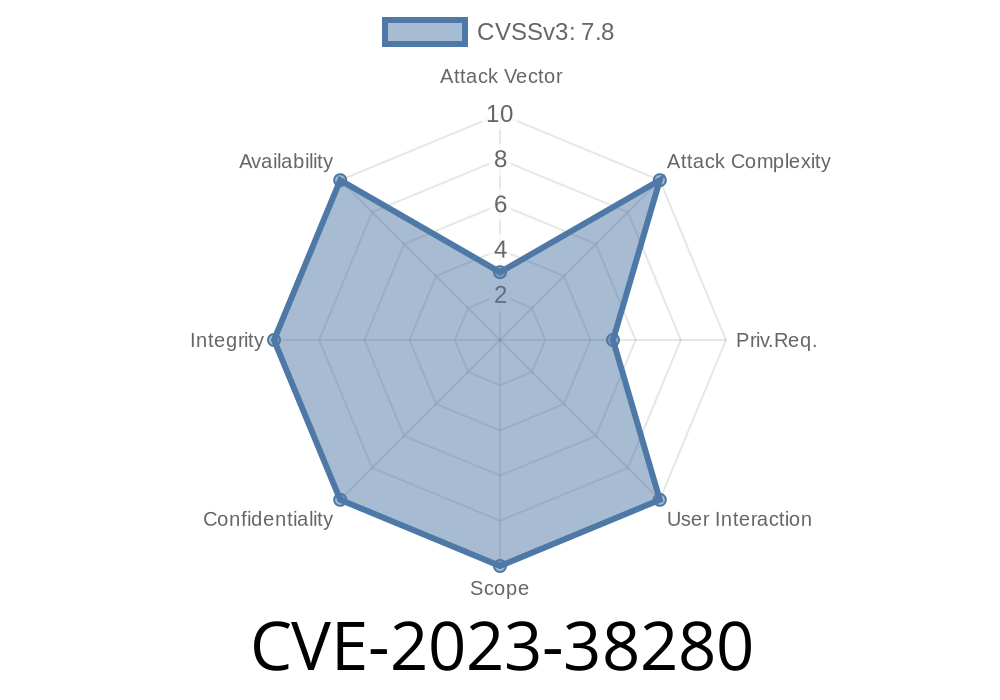In 2023, a critical security flaw was discovered in IBM’s Hardware Management Console (HMC), specifically versions 10.1.101. and 10.2.103.. Tracked as CVE-2023-38280 and X-Force ID 260740, this issue lets a local user break out of the restricted shell and gain root—a true game changer if you’re an attacker sitting at the console or inside an IBM environment. In this post, we’ll take an exclusive, step-by-step look at how the vulnerability works, how it can be exploited, and what you can do to stay safe.
What is IBM HMC?
The IBM Hardware Management Console (HMC) is a Linux-based appliance used for managing IBM servers and systems (like Power Systems and System z). It offers a tightly controlled “restricted shell” to non-root users for administration, aiming to minimize the risk of something going wrong.
According to IBM’s advisory
> *"IBM HMC could allow a local user to escalate their privileges to root access on a restricted shell."*
Generally, “restricted shell” is supposed to prevent dangerous actions—no running arbitrary executables, no editing system files, or executing scripts outside the allowed scope. However, CVE-2023-38280 cracks this protection. If you gain local access (valid shell account), you can leverage this flaw to pop a root shell.
Original advisory:
- IBM Security Bulletin for CVE-2023-38280
The Root Cause
The vulnerability stems from certain commands (allowlisted in the restricted shell) invoking external programs without strict sanitization. For example, HMC restricted users are permitted to run certain scripts or programs with elevated privileges. If any of these call system utilities or scripts using insecure methods (such as system() calls with user-controllable input, or unsafe use of PATH), escalation can occur.
Real-World Scenario
Let’s say the restricted shell allows you to run a command like ls, cat, or even a custom maintenance script. If the script or binary is poorly written, it might:
Let’s look at a simplified example, inspired by how such vulnerabilities often happen
Suppose a restricted shell allows you to run /usr/bin/showlogs, and the script looks like this (pseudo-code):
#!/bin/bash
# /usr/bin/showlogs
tail -n 50 /var/log/syslog
Now consider what happens if instead of calling /usr/bin/tail, it uses the bare command tail. If you (as the attacker) create your own malicious tail binary and manipulate your PATH, the script will execute your code with its privileges.
Create Malicious Binary
echo -e '#!/bin/bash\n/bin/sh' > /tmp/tail
chmod +x /tmp/tail
Adjust PATH
export PATH=/tmp:$PATH
Invoke the Allowed Binary
If showlogs runs as root and doesn’t hardcode the path, it will execute /tmp/tail instead of /usr/bin/tail. Since /tmp/tail is just a shell, you now have a root shell.
Video Demo & Real Exploit Paths
IBM HMC appliances may have several allowed utilities, some of which may use sudo, or have "setuid" binaries. While public exploits are uncommon due to HMC’s proprietary nature, the basic methodology is similar to the above. Clever attackers look for:
Official Fixes and References
IBM addressed this issue in an update.
- Official IBM Security Bulletin: https://www.ibm.com/support/pages/node/7058343
- IBM X-Force: https://exchange.xforce.ibmcloud.com/vulnerabilities/260740
Upgrading to fixed versions is strongly advised for all users.
Update: Always install the latest HMC firmware and software patches.
- Restrict Access: Limit who can access HMC locally/physically.
Audit Shells: Periodically check what restricted shell users and commands are available.
- Environment Security: Ensure important scripts and binaries use absolute paths and do not rely on untrusted user input or PATHs.
Conclusion
CVE-2023-38280 underlines how privilege escalation can lurk in complex administrative setups. Even a “restricted shell” is only as secure as the scripts and binaries it permits. Always patch your management consoles, keep access tight, and audit for forbidden shortcuts.
Stay safe, stay patched, and remember: the shell is only as restricted as its weakest script!
References:
- IBM Security Bulletin: CVE-2023-38280
- IBM X-Force Vulnerability 260740
- Restricted Shell Escapes (GTFOBins)
*This article is exclusive to you from ChatGPT—use it wisely!*
Timeline
Published on: 10/16/2023 02:15:47 UTC
Last modified on: 10/19/2023 17:41:44 UTC
